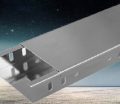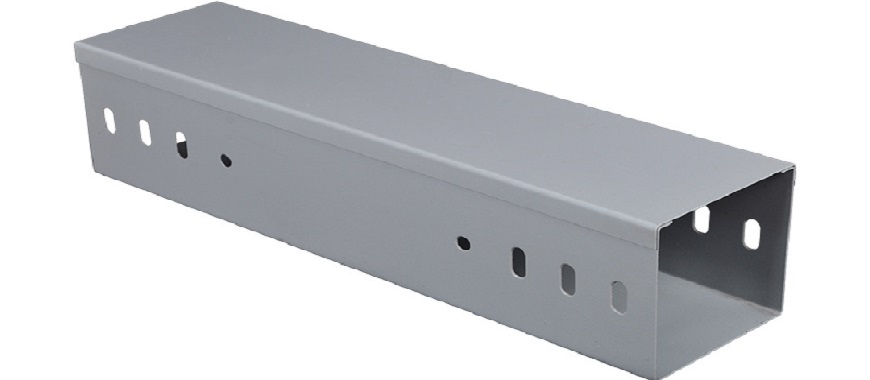
Prevent cable snags with durable plastic cable tray liner, offering smooth bottom & side coverage for secure cable management. Cable tray liners are essential components in modern cable management systems, providing a stable and protective surface for cables. They are designed to prevent snagging and damage, ensuring smooth cable installation and long-term durability. A properly chosen cable tray liner can enhance organization, minimize wear and tear, and improve overall system performance. Selecting the right cable tray liner is crucial to meeting the specific demands of different environments and applications. Factors such as material, size, and flexibility play a key role in ensuring compatibility with your cable tray system. By investing in a high-quality cable tray liner, businesses and facilities can achieve safer, more efficient cable tray use and reduce maintenance needs over time.
What is a Cable Tray Liner?
A cable tray liner is a specialized accessory designed to enhance the functionality of cable tray systems. It serves as a protective barrier between the cables and the tray, ensuring that cables are safeguarded from damage during installation and operation. Cable tray liners provide a smooth, solid surface that minimizes friction and prevents cables from snagging on the tray’s edges or perforations. By incorporating a cable tray liner into wire basket installations, cable management systems become more efficient, organized, and reliable.
Cable tray liners are essential in environments where numerous cables need to be securely managed—including industrial, commercial, and residential settings. Their versatility and practicality make them an indispensable part of modern infrastructure.
Features of High-Quality Cable Tray Liners
Exceptional Durability
Constructed from high-performance polymers, the cable tray liner withstands constant use and harsh environments. It resists abrasion, punctures, and exposure to oils, solvents, or chemicals, and remains stable across a wide temperature range—from sub-zero cold to intense heat—ensuring long-term protection for cables.
Ultra-Smooth Surface
The liner’s finely finished interior minimizes friction, allowing cables to glide freely during installation and maintenance. This smooth surface prevents snagging or scraping that can damage delicate insulation or conductors, reducing the risk of wiring faults and saving time.
Reliable Electrical Insulation
In addition to mechanical protection, the tray liner provides a non-conductive barrier between cables and the metal tray. This additional layer of insulation helps prevent stray currents, ground faults, and short circuits—an important feature in high-density or sensitive data-center environments.
Customization and Compatibility
Customization is critical; like our GangLong Fiberglass cable tray liners, which can be easily cut with a utility knife to fit unique dimensions, they accommodate high quality types of cable tray—solid-bottom, perforated, and ladder—while maintaining optimal protection and organization.
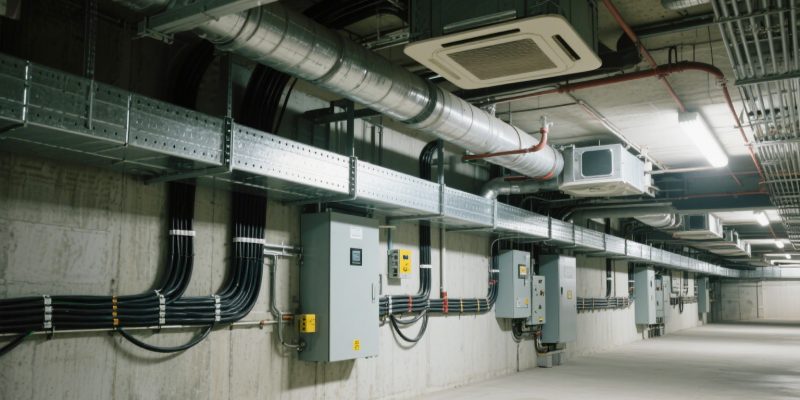
Cable Tray Step Over Kits for Easy Assembly
Benefits of Using a Cable Tray Liner
Cable tray liners deliver a tailored protective layer that shields cables from mechanical and electrical hazards, streamlines installation and maintenance, and supports organized, code-compliant layouts. Compatible with all high-quality tray types, they offer versatile, cost-effective improvements across industrial, data-center, and commercial environments.
Enhanced Cable Protection
Insert liners create a continuous, smooth barrier that shields cables from sharp edges, weld spatter, and perforations in the tray. Their high-performance polymer construction resists punctures, abrasions, and wear even under heavy cable loads or continuous vibration. By preventing micro-cuts and insulation degradation, liners help maintain signal integrity and reduce the likelihood of unplanned downtime or emergency repairs. In harsh industrial settings, the extra layer of defense extends cable service life and lowers replacement expenses.
Increased Electrical Safety
Beyond guarding against physical damage, cable tray liners act as a non-conductive dielectric barrier between live conductors and the metal tray. This separation is especially critical in damp, corrosive, or chemical-exposed areas where moisture or contaminants could bridge contacts and cause ground faults or short circuits. Liners thus help prevent arc-flash incidents, stray currents, and potential fire hazards. In sensitive installations—such as data centers or control rooms—this added insulation contributes significantly to reliable, code-compliant performance.
Simplified Maintenance
The impervious surface of liners blocks dirt, dust, and debris from settling into tray floors, eliminating hidden pockets that can accelerate cable wear. Routine cleaning requires only a quick wipe or vacuum pass, without tray disassembly or manual debris removal. This streamlined upkeep reduces labor hours, minimizes downtime during inspections, and supports stringent uptime requirements. Facilities operating under regulatory mandates or service-level agreements especially benefit from faster, less intrusive maintenance cycles.
Improved Installation Efficiency
Designed for “drop-in” or “snap-in” placement, most insert liners require no additional fasteners or adhesives—just a utility knife for on-site trimming. Installers can cut liners to precise lengths, navigate bends, tees, and transitions, then lay or snap them into position in minutes. This plug-and-play approach drastically cuts installation labor compared to custom-fabricated protector strips or aftermarket solutions. For large-scale projects covering hundreds of feet, the time savings translate directly into lower project costs and accelerated completion.
Versatile Compatibility
Cable tray insert liners are compatible with all high-quality tray profiles—including solid-bottom, perforated, ventilated, and ladder systems—without altering tray performance. Standard liner sheets can be scored, snapped, or trimmed to match any width, depth, or configuration, making them ideal for retrofits and new builds alike. This flexibility ensures a snug, gap-free fit across straight runs, horizontal bends, and vertical drops, maintaining continuous protection and organization throughout the network.
Better Organization & Aesthetics
By providing a uniform base, liners promote neat, even cable routing and prevent tangling or uneven loading within the tray. Organized cables are easier to trace, inspect, and replace, improving overall system manageability. In installations where trays are exposed—such as office ceilings or retail spaces—liners contribute a clean, polished appearance. Available in multiple colors, they can also be used for circuit color-coding or to complement interior design schemes.
Long-Term Cost Savings
Although liners add a modest upfront cost, their contributions to reduced cable damage, faster maintenance, and quicker installation yield a strong return on investment. Fewer cable replacements and emergency repairs translate to lower spare-parts inventory and service costs. Streamlined cleaning and inspection cut recurring labor expenses, while the efficiency gains during installation help projects stay on budget. Over the lifespan of the cable management system, these savings can amount to a substantial reduction in total cost of ownership.
How to Choose the Right Cable Tray Liner
Selecting the ideal cable tray liner involves understanding your installation’s specific requirements—cable types, environmental conditions, and tray dimensions—so you can balance protection, performance, and cost. The right liner material and thickness will ensure mechanical and electrical safety, while properly chosen roll dimensions streamline installation and minimize waste.
Assessing System Needs
Start by identifying the cables you’ll run: delicate data or fiber-optic lines demand an ultra-smooth, low-friction liner, whereas heavy power or armored cables require robust material that resists deformation under load. Factor in your environment—outdoor UV exposure, chemical vapors, extreme temperatures, or constant vibration may necessitate UV-stabilized, chemical-resistant, or high-temperature-rated liners. Finally, measure tray width, depth, and total run length (including bends and fittings) to ensure seamless coverage without excessive seams or gaps.
Evaluating Material and Thickness
When selecting a liner to match your cable tray material, common options include PVC (available in Plastic Black), HDPE, fiberglass, and flame-retardant composites. PVC delivers cost-effective electrical insulation; HDPE offers superior impact and chemical resistance; and fiberglass excels in corrosive or high-heat settings. Thicknesses generally range from 1–2 mm for light-duty indoor use, 3–4 mm for most industrial applications, up to 5 mm or more where maximum wear resistance is required.
Considering Roll Dimensions
Liner rolls are manufactured in standard widths that meet cable tray requirements—common sizes include 150 mm, 300 mm, 600 mm, and 900 mm. To minimize trimming, select a roll width matching your tray’s internal width. Next, calculate total footage by summing all straight sections and adding allowances for bends, overlaps, and fittings—typically 5–10% extra. Ordering rolls that slightly exceed your needs prevents mid-project shortages, reduces seams, and cuts waste, streamlining installation.
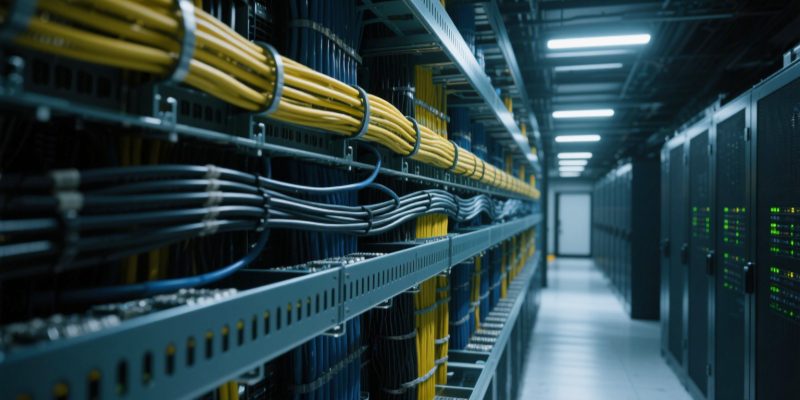
Top Cable Tray Brands for Reliable Cable Management
Applications of Cable Tray Liner
Cable tray liners are highly adaptable components that enhance cable management and protection across a variety of settings. Below are some of the most common environments where liners deliver tangible benefits:
Industrial Plants
In manufacturing and processing facilities, cable trays are exposed to oil, dust, vibration, and heavy machinery. Liners shield power and control cables from abrasion, chemical splashes, and mechanical impacts, reducing the risk of insulation damage and unplanned downtime. Their smooth surfaces also simplify cleaning, preventing debris buildup that can accelerate wear.
Commercial Buildings
Office complexes, shopping centers, and public venues often have exposed ceiling trays for aesthetic or practical reasons. Liners create a neat, uniform backdrop for visible cable runs while adding an extra layer of electrical insulation. This not only improves overall appearance but also helps meet building-code requirements for fire safety and grounding.
Data Centers
High-density data cables are particularly vulnerable to cuts, kinks, and electromagnetic interference. Cable tray liners provide a consistent, low-friction base that prevents micro-bending and physical stress on fiber and copper lines. In addition, the insulating layer helps reduce stray currents and maintains signal integrity, supporting the uptime demands of mission-critical IT infrastructure.
Healthcare Facilities
Hospitals and labs require strict adherence to safety and cleanliness standards. Liners in medical-grade cable trays protect critical equipment wiring from chemical disinfectants, accidental spills, and frequent maintenance access. Their easy-to-sanitize surfaces help prevent contamination, while their insulating properties enhance patient and staff safety in sensitive clinical environments.
Installation and Maintenance Tips for Cable Tray Liners
Installation Steps
- Proper installation is key to maximizing the benefits of a cable tray liner. Begin by performing a cable tray measurement to determine the dimensions of the tray, including length, width, and depth. This step ensures you can accurately determine the required size of the liner. Use a utility knife to cut the liner to size, ensuring it fits snugly within the tray.
- Once the liner is cut to the appropriate dimensions, lay it evenly across the tray’s bottom. Smooth out any wrinkles or folds to ensure a uniform surface. If needed, secure the liner in place with fasteners or adhesives designed for use with cable management systems.
- During installation, avoid overstretching the liner, as this may compromise its protective properties. Take care to align the liner properly, especially when working with trays that have curves or angled sections.
Maintenance Best Practices
Maintaining your cable tray liner in peak condition is key to protecting your cables and maximizing system uptime. Below are best practices to keep liners performing reliably over the long term.
Regular Visual Inspections
Perform a walk-through inspection at least quarterly (and more often in harsh environments) to look for cracks, splits, thinning spots, or signs of abrasion. Pay special attention around bends, fittings, and high-stress areas where cables may rub more intensely. Early detection of wear allows you to repair or replace small sections before they lead to larger cable failures.
Prompt Repairs and Section Replacement
When damage is discovered—whether a tear, puncture, or excessive thinning—cut out the affected liner segment and replace it with a new insert. Use matching material and thickness to maintain consistent protection. Secure the replacement piece using the same drop-in or snap-in method to ensure a tight fit with no gaps that could expose cable edges.
Thorough Cleaning Procedures
Dust, dirt, metal shavings, or spilled fluids can accumulate on the liner’s surface and accelerate wear. At each inspection, remove debris using a soft brush or low-suction vacuum. For sticky residue or oil, wipe the liner with a mild detergent solution and rinse with clean water. Avoid harsh solvents that might degrade the polymer; always consult the manufacturer’s cleaning guidelines.
Tailored Inspection Frequency
Adjust your maintenance schedule based on the operational environment:
- High-traffic or industrial zones: Monthly to bi-monthly checks
- Standard commercial installations: Quarterly inspections
- Cleanroom or low-use areas: Semi-annual reviews
Document each inspection date, findings, and corrective actions in a maintenance log to track liner wear trends over time.
Preventive Upkeep and Inventory Management
Keep spare liner material on hand—ideally from the same batch or dye lot—such as our GangLong Fiberglass liners, to facilitate swift replacements. We train maintenance staff on correct trimming, insertion, and edge-sealing techniques. Periodically review liner performance and update your maintenance plan if you notice recurring failure points, adjusting material thickness or liner type as needed.
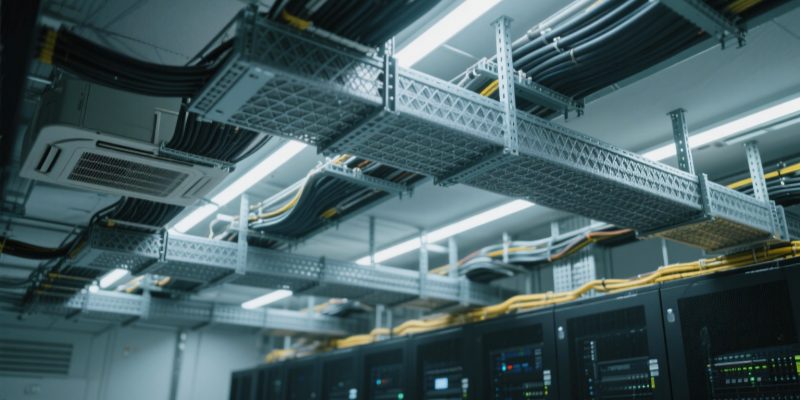
Types of Cable Tray Insulation You Should Know
FAQs about Cable Tray Liner
A tray liner is essential in many cable management systems. It provides a smooth, protective surface that prevents cables from snagging or being damaged by the tray’s edges or perforations. By reducing abrasion, it enhances the lifespan of your cables and improves the overall reliability of your system. Tray liners are especially beneficial in environments with heavy cable loads or where frequent cable adjustments are needed. They also simplify maintenance, making cable inspections and replacements more efficient.
The allowable cable tray fill depends on industry standards and the type of cables being used. Guidelines specify the percentage of the tray’s cross-sectional area that can be occupied by cables to ensure proper airflow and prevent overheating. Exceeding the recommended fill can lead to cable damage and reduced system performance. Always refer to relevant codes, such as the NEC or local regulations, when calculating cable tray fill for your system.
A cable tray cover protects cables from environmental factors, such as dirt, moisture, and debris. It is often used in outdoor or industrial settings where exposure to harsh conditions is likely. Covers also provide additional safety by preventing accidental contact with the cables. In areas with frequent human activity, they help avoid potential hazards like tripping or electric shocks.
Paint tray liners are highly effective for simplifying cleanup after painting projects. They provide a disposable layer inside the paint tray, reducing the need for scrubbing or washing. Tray liners are often made from durable plastic, allowing them to hold various types of paint without leaking. By using a liner, you can quickly switch between colors and maintain a clean workspace throughout your project.

As the editor of GangLong Fiberglass, I have years of experience and in-depth research, focusing on cable tray products, fiberglass solutions, and grille systems. I incorporate years of industry insights and practical experience into every content, committed to promoting the progress of the industry. At GangLong Fiberglass, my commitment is reflected in every product, from innovative cable trays to durable fiberglass solutions and sturdy grille systems. As an authoritative voice in the industry, my goal is to provide valuable information to professionals and businesses and promote forward-looking solutions.


